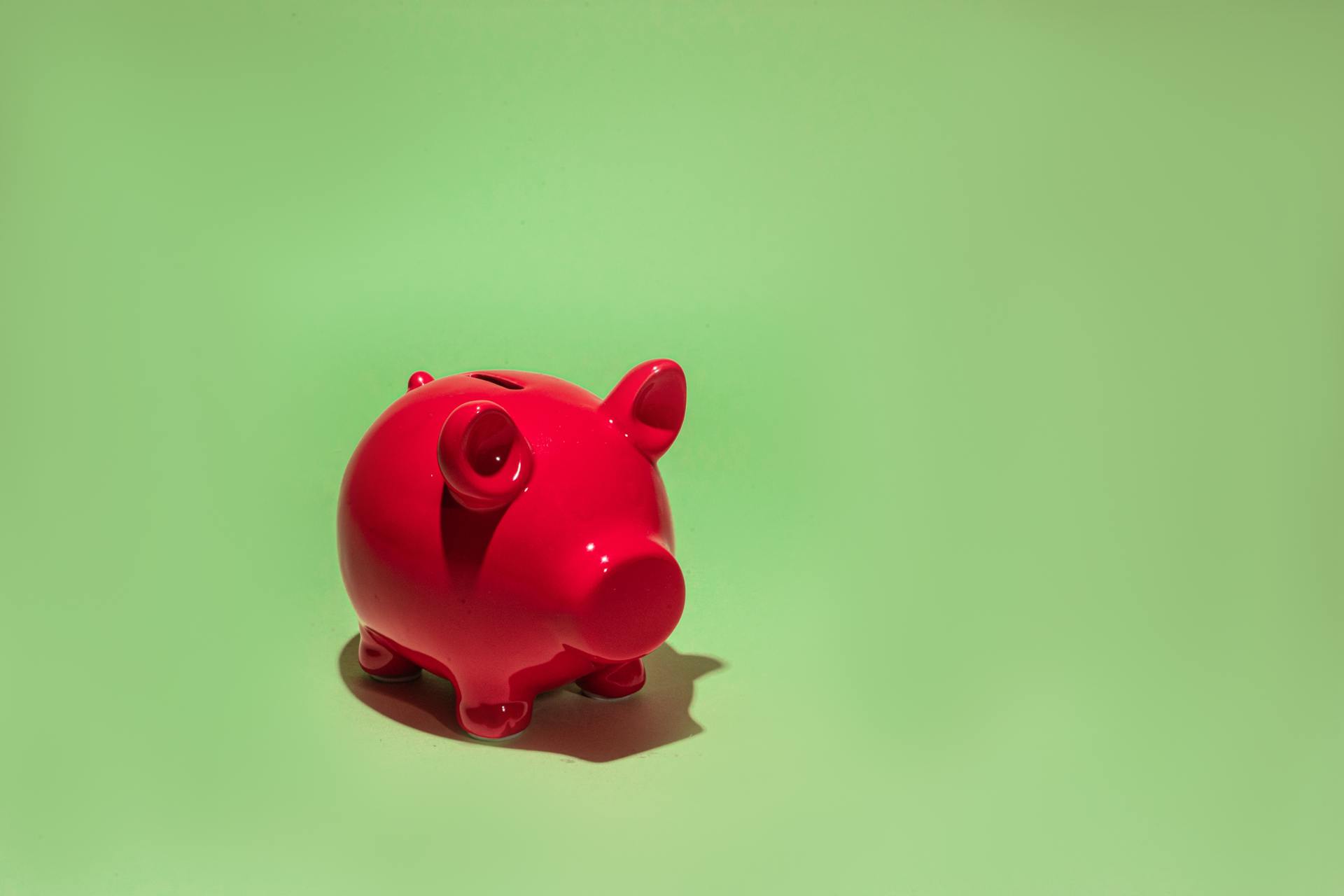
Current yield is a crucial metric for investors to understand, especially when it comes to bonds. It essentially measures the return on investment an investor can expect from a bond.
The current yield on a bond is calculated by dividing the annual interest payment by the current market price of the bond. For example, if a bond with a face value of $1,000 has an annual interest payment of $50 and is currently trading at $900, the current yield would be 5.56% ($50 ÷ $900).
Understanding current yield is essential for making informed investment decisions, as it helps investors compare the returns of different bonds and make smart choices.
What is Current Yield
The Current Yield is a crucial metric for investors to understand when buying a bond. It tells you the percentage return an investor can expect to earn over the next year if they purchase the bond at its current market price.
A bond is essentially a loan that a company takes out to borrow money, which must be repaid in full in the future, with interest paid each year.
Current Yield is calculated by factoring in the market price and the coupon rate on the bond. This gives you a clear picture of the potential returns on your investment.
From the company's perspective, the bond yield represents their borrowing costs, while from an investor's perspective, it represents the potential returns and the risks associated with the company's issuance.
Calculating Current Yield
Calculating current yield is a three-step process: first, observe the current bond price, which can be a discount, par, or premium to par; second, determine the annual coupon payment based on the bond's coupon rate, par value, and payment frequency; and third, use the formula: annual coupon payment divided by the bond's current market price, expressed as a percentage.
The formula for current yield is straightforward: annual coupon payment divided by the bond's current market price, expressed as a percentage. This calculation helps investors identify bonds that generate the highest returns, which can be helpful for short-term investments.
To calculate the current yield, you need to know the current market price of the bond, which can be found in the market or estimated using a tool like the PRICE function in Excel. If you don't know the current market price, you can look for it in a company's filings or use a paid service like Bloomberg.
A bond trading at $900 with a $1,000 face value and a $60 coupon has a 6% coupon rate and a current yield of 6.7%. Unlike the coupon rate, which remains fixed, the current yield fluctuates based on the market price of the bonds.
Here's a simple example to illustrate the calculation:
As you can see, the current yield changes depending on the market price of the bond. This is because the current yield is calculated by dividing the annual coupon payment by the bond's current market price, expressed as a percentage.
Calculating Current Yield (Examples)
The current yield is a crucial metric for investors, and it's essential to understand how to calculate it. The formula is straightforward: annual coupon payment divided by the current market price.
To calculate the current yield, you need to know the bond's annual coupon payment and its current market price. For example, if a bond has an annual coupon payment of $60 and a current market price of $900, the current yield would be 6.67%. This means that if you buy the bond at $900, you can expect to earn 6.67% per year in interest.
The current yield can be affected by the bond's market price, which can fluctuate based on market conditions. If the bond trades at a discount to par value, the current yield will be higher than the coupon rate. On the other hand, if the bond trades at a premium to par value, the current yield will be lower than the coupon rate.
Here are some examples of how to calculate the current yield:
As you can see from the examples, the current yield can vary depending on the bond's market price. If you buy a bond at a discount, you can expect to earn a higher return, but if you buy a bond at a premium, you'll earn a lower return.
In summary, calculating the current yield is a simple process that involves dividing the annual coupon payment by the current market price. By understanding how to calculate the current yield, you can make informed investment decisions and identify bonds that offer the best returns for your money.
Comparing Current Yield
Current Yield is just one of the many yield metrics used to measure bond returns. It calculates the percentage investors would earn on a bond if they bought it today and held it for a year, factoring in the market price and the coupon rate on the bond.
This metric is useful because it gives you a quick snapshot of a bond's return potential, but keep in mind that it doesn't take into account the bond's maturity date or the company's ability to make payments.
To give you a better idea, here's a comparison of Current Yield with other yield metrics:
By comparing these metrics, you can get a more complete picture of a bond's potential return and make a more informed investment decision.
Vs
Current Yield is just one of the many yield metrics used to measure the returns on a bond. It's the percentage investors would earn on a bond if they bought it today and held it for a year, factoring in the market price and the coupon rate on the bond.
But what about Yield to Maturity, Yield to Call, and Yield to Worst? These metrics all measure the returns on a bond, but in different ways. For example, Yield to Maturity gives the annualized return investors earn if they buy a bond at its current market price and hold it until maturity.
Here's a quick comparison of these yield metrics:
Bond prices and yields are inversely related, meaning if the price of a bond goes up, its yield declines, and vice versa.
When Is Greater Than?
The yield to maturity is a crucial factor in bond investing. When the yield to maturity is greater than the current yield, it indicates the bond is selling at a discount, which means its price is less than par value.
This can be a good investment if held to maturity, as you're paying less than the face value to buy it but will receive the face value at maturity.
Key Concepts and Rules
Current yield is a crucial concept in fixed income investing, and understanding it can help you make informed decisions about your investments. It's the annual income an investment provides, divided by its current price.
A bond's current yield is its annual income, including interest payments and dividends, divided by its current price. This is a key takeaway from fixed income investing.
The market price of a bond can change, affecting its current yield. You may purchase a bond at a discount or a premium, and the purchase price impacts the current yield.
Here are the rules of thumb for current yield:
These rules help you understand how the market price of a bond affects its current yield and yield to maturity.
Calculating Coupon Rate and Discount Par
Calculating the coupon rate is a straightforward process. The coupon rate equals the annual coupon payment divided by the bond's par value, as seen in the example where a $1,000 par value with a $50 annual coupon payment yields a 5% coupon rate.
The coupon rate remains fixed throughout the bond's term, unlike yields which can fluctuate with market changes. A bond's coupon rate determines the annual interest payment owed to the bondholder by the issuer until maturity.
To illustrate the relationship between coupon rate and bond price, consider a bond trading at a discount or premium to its par value. If the bond is trading at a discount, the current yield will be higher than the coupon rate, and if it's trading at a premium, the current yield will be lower than the coupon rate.
Calculating Coupon Rate
Calculating Coupon Rate is a straightforward process that involves determining the annual interest payment owed to a bondholder by the issuer until maturity. The coupon rate is essentially the annual coupon payment divided by the bond's par value.
The annual coupon payment equals the coupon rate multiplied by the bond's par value. For example, if a bond has a $1,000 par value and a bondholder is entitled to receive $50 per year, the coupon rate is 5%. This is calculated by dividing the annual coupon payment by the bond's par value: $50 ÷ $1,000 = 5%.
The coupon rate remains fixed during the bond's term, unlike yields that can fluctuate with market changes. This means that regardless of changes in the market price of a bond, the coupon remains constant.
Here's a simple formula to calculate the coupon rate:
Coupon Rate = Annual Coupon Payment ÷ Par Value
For instance, a bond with a $1,000 par value and an annual coupon payment of $50 has a coupon rate of 5%.
Discount Par: Differences
A bond's price can be either above or below its face value, and this affects its yield to maturity and coupon rate.
If a bond is trading below its face value, it's considered a discount bond. This means its price is lower than its par value.
The par value of a bond is its face value, which is typically $1,000. If a bond is priced at $900, it's trading at a discount.
Here's a summary of the differences between discount and par bonds:
YTM = Coupon Rate
Discount bonds offer a higher yield to maturity than their coupon rate, making them attractive to investors.
Market Price = Par Value
Calculating the coupon rate and discount par can be a complex process, but it's made easier when we understand how the different components interact. The current yield, or CY, is a key metric that helps investors identify bonds that generate the highest returns.
The current yield is calculated by multiplying the coupon rate by the par value of the bond, which is then divided by the current bond quote. In the case where the bond's market price equals its par value, the current yield is equal to the coupon rate. This is because the formula for current yield is: (rate * redemption) / pr, where rate is the annual coupon rate, redemption is the par value, and pr is the bond quote.
This scenario is the most common with investment-grade or "blue chip" companies that have very low credit risk and that have recently issued bonds in an environment in which interest rates have not changed significantly. In fact, it's fairly rare for a bond's market price to equal its par value exactly, but it does happen sometimes.
The current yield calculation helps investors identify bonds that generate the highest returns, which can be helpful for short-term investments. However, it's also a double-edged sword because bonds with higher returns also have greater risk – meaning there is a higher chance of losing money or selling the bond at a loss in the future.
Sources
- https://www.carboncollective.co/sustainable-investing/current-yield
- https://www.wallstreetprep.com/knowledge/bond-yield/
- https://www.investopedia.com/ask/answers/072915/what-relationship-between-current-yield-and-yield-maturity-ytm.asp
- https://www.investopedia.com/terms/c/currentyield.asp
- https://breakingintowallstreet.com/kb/debt-equity/current-yield/
Featured Images: pexels.com


